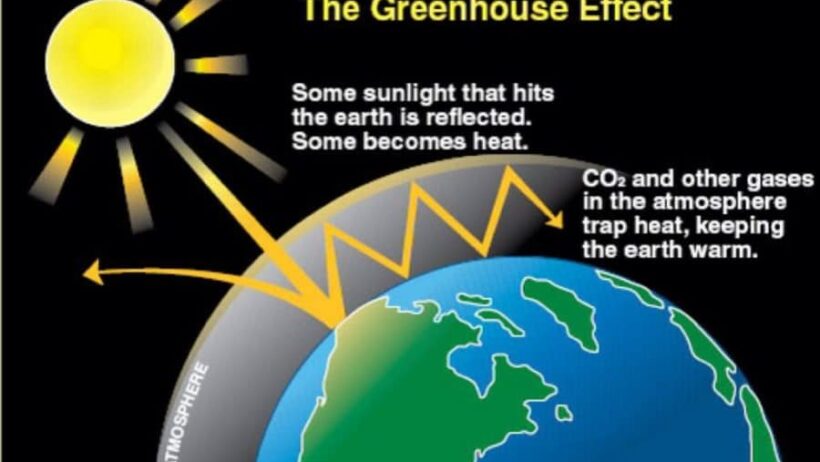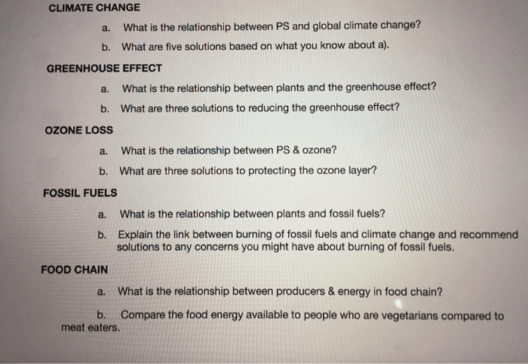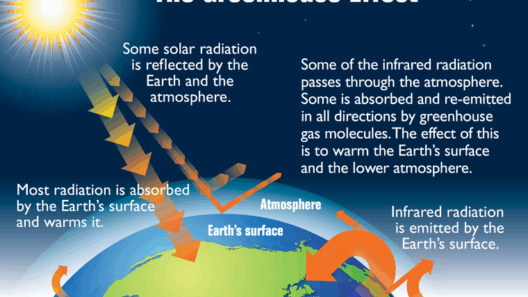Understanding the Natural Greenhouse Effect is fundamental in appreciating the delicate balance that sustains life on Earth. This phenomenon plays an indispensable role in regulating the planet’s temperature, thereby creating an environment conducive to life. By trapping heat in our atmosphere, the Natural Greenhouse Effect ensures that Earth is not besieged by frigid temperatures of outer space, but is instead a realm of warmth and vitality.
However, while this effect is often viewed with a simplistic lens, its intricacies reveal a deeper, fascinating narrative about our planet and its climate dynamics. Let’s unravel this complex, yet essential, feature of our Earth.
The Mechanism of Heat Retention
At the heart of the Natural Greenhouse Effect is the interplay between solar radiation and the Earth’s surface. Incoming sunlight—radiated in the form of shortwave radiation—pierces through the atmosphere and reaches the Earth. Once this energy is absorbed by the surface, it transforms into longer-wave infrared radiation, a process akin to a cosmic dance where energy is passed and transformed at every turn.
This outgoing thermal energy encounters greenhouse gases in the atmosphere, which include carbon dioxide (CO2), methane (CH4), and water vapor (H2O). These gases have the notable ability to absorb and re-radiate infrared radiation, effectively preventing it from escaping back into space. Through this mechanism, greenhouse gases act as a thermal blanket, maintaining Earth’s temperature within a range that supports diverse life forms.
This balance created by the Natural Greenhouse Effect is crucial. Without it, the average surface temperature of Earth would plummet by approximately 33 degrees Celsius, plunging our world into a state that is largely inhospitable to life as we know it. Thus, the Natural Greenhouse Effect not only preserves warmth; it fundamentally shapes the ecological niches that allow flora and fauna to thrive.
Key Players: Greenhouse Gases in Action
The composition of the atmosphere has a significant influence on the efficiency of the Natural Greenhouse Effect. Carbon dioxide, for example, is a vital component—it is emitted through processes such as respiration, combustion, and volcanic eruptions. Although it exists in trace amounts, its heat-trapping capabilities are substantial. Methane, another potent greenhouse gas, has an even greater capacity to trap heat, albeit it is present in much lesser concentrations.
Water vapor, the most abundant greenhouse gas, is unique in that its concentrations vary dramatically with temperature. Warmer temperatures facilitate increased evaporation; thus, a warming Earth can produce more water vapor, reinforcing the greenhouse effect in a feedback loop that amplifies global warming. This complex interdependence among greenhouse gases underscores a fundamental principle of atmospheric science: the intricacies of climate dynamics are often governed by myriad feedback mechanisms.
Beyond mere temperature modulation, greenhouse gases contribute to the stability of weather patterns and moisture cycles. This orchestration of atmospheric chemistry is crucial—not just for maintaining the present state of Earth’s climate, but for determining future trajectories of global weather phenomena.
The Intricacies of Natural Climate Variability
Understanding the Natural Greenhouse Effect is not merely an academic pursuit; it reflects the ongoing dynamism of climate systems. Natural fluctuations and phenomena, such as volcanic eruptions, solar cycles, and ocean currents, contribute to variations in greenhouse gas concentrations and thus impact the degree of warming.
For instance, volcanic eruptions release considerable amounts of sulfur dioxide (SO2), which can lead to temporary cooling effects due to the formation of sulfate aerosols that reflect solar radiation away from Earth. On the other hand, the El Niño and La Niña phenomena demonstrate how ocean temperatures can oscillate, influencing atmospheric conditions and precipitation patterns around the globe. These natural cycles elucidate how multifaceted and responsive Earth’s climate is to both internal dynamics and external perturbations.
Human Influence: A Contemporary Challenge
In modern times, human activity has introduced unprecedented levels of greenhouse gases into the atmosphere, primarily through fossil fuel combustion, deforestation, and industrial processes. This has resulted in a marked increase in the intensity of the Natural Greenhouse Effect—a contributing factor to global warming. The consequences of this intensified greenhouse effect manifest in a myriad of alarming phenomena, including rising sea levels, shifts in biodiversity, and extreme weather events.
As the atmospheric concentration of greenhouse gases continues to escalate, the profound implications call into question the viability of Earth’s climate systems, posing a stark challenge for future generations. This dilemma brings urgency to the dialogue surrounding sustainability and ecological conservation. Understanding the intricacies and significance of the Natural Greenhouse Effect equips individuals and societies to address these pressing issues responsibly and innovatively.
In conclusion, the Natural Greenhouse Effect is a remarkable natural process that safeguards the planet’s temperature, fostering an environment rich in biodiversity. Its complexity, underscored by interdependencies among greenhouse gases and natural phenomena, reflects the delicate tapestry of Earth’s climate system. As humanity grapples with the consequences of its actions, a profound understanding of this mechanism is essential to foster resilience and sustainability for the generations that follow.







